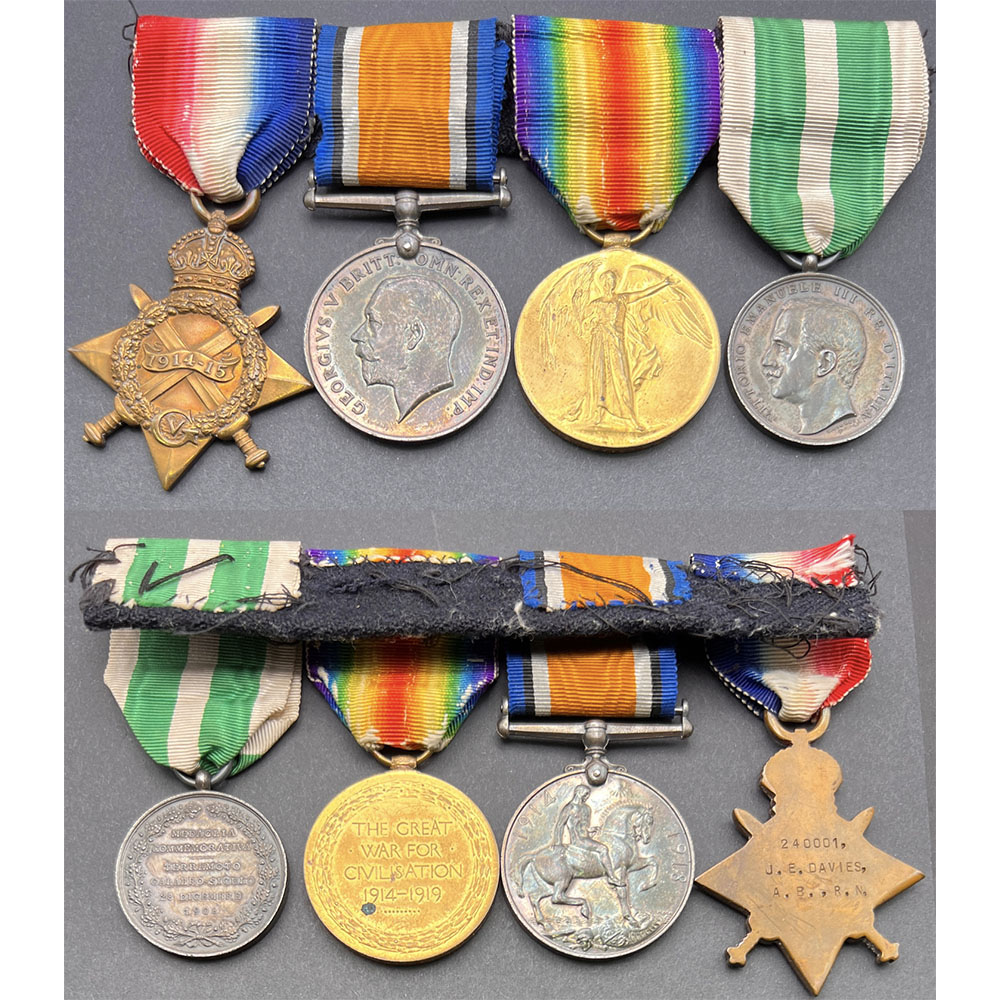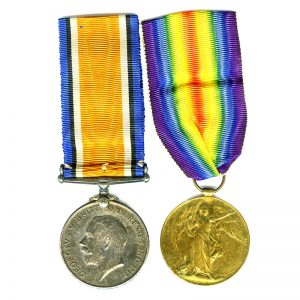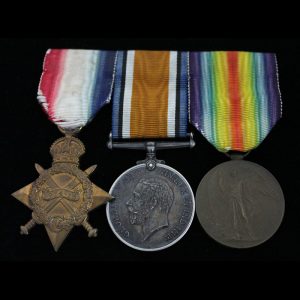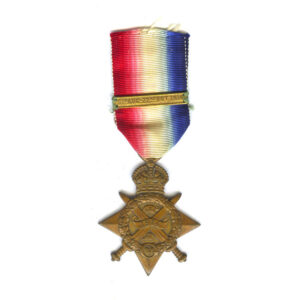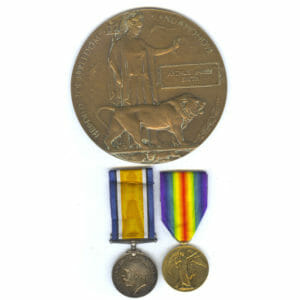Description
1914-15 Star Trio, 1908 Messina Earthquake Medal, 240001 James Edward Davies, Royal Navy, earned his Earthquake Medal aged 16 as a Boy on HMS Euryalus
Messina Earthquake Medal by L. Giorgi, confirmed on the original ADM 171 Medal Roll for services as Boy 1st Class on HMS Euryalus.
Recorded as medal issue number 1038, posted to him on HMS Good Hope on 10th January 1913.
About 640 medals earned to the ship.
Trio all officially impressed: “240001. J.E. Davies. A.B. R.N.”
Original silk ribbons, being sewn onto some black cloth for uniform wear.
James Edward Davies, was born on 8th February 1891 in Buxton, Derbyshire.
He was a Garden Boy, when he first joined the Royal Navy as a young 16 year old Boy 2nd Class at HMS Impregnable on 5th November 1907.
Promoted to Boy 1st Class, HMS Invincible on 4th September 1908.
Saw his first real ship posting, when he joined as 17 year and 7 months old Boy 1st Class on HMS Euryalus serving from 23rd September 1908 until 28th January 1809.
The Euryalus at the time was being used as a Boy’s Training Ship when young Davies was deployed to Italy, in response to the Earthquake that had struck Sicily and Calabria on 28th December 1908.
The ship worked on evacuating casualties and landing much needed supplies.
Served on HMS Zealandia from 12th October 1913 to 20th September 1917.
Briefly was Leading Seaman on board from 15th Feb 1915 to 29th June 1915, before returning to A.B.
His next WW1 period posting was on HMS Glory from 12th October 1917 to 11th October 1918.
Notably during this period, he served on board the ship as Flagship to Rear Admiral Thomas Kemp, with the British North Russia Squadron, including the Cruiser HMS Vindictive and 6 Minesweepers.
The Squadron’s mission evolved after the Bolshevik Revolution started in 1917 so her new role was preventing the supplies that had been delivered from falling into the hands of the “Red Army”.
His Captain, Admiral Kemp managed to maintain good relations with the local communist leadership and managed to on 6th March 1918, reach an agreement with the authorities in Murmansk to send ashore a party of 130 marines from the Glory to help defend the city from a feared invasion by neighbouring Finland.
Finnish Forces did attempt to seize the nearby Pechenga as a first step towards advancing on to Murmansk, but the attack broke down after the Cruiser Cochrane contributed her marines and gunfire support to the defence.
The ship then remained in Northern Russia during the Allied Intervention in the Russian Civil War in late 1918 and into 1919.
Having spent a year in Russia, he returned to HMS Victory I on 18th October 1918.
He then spent some time on HMS Temeraire from 23rd September 1919 to 12th January 1921.
After that discharged on 16th March 1921 from HMS Victory I, following the end of the terms of engagement.
